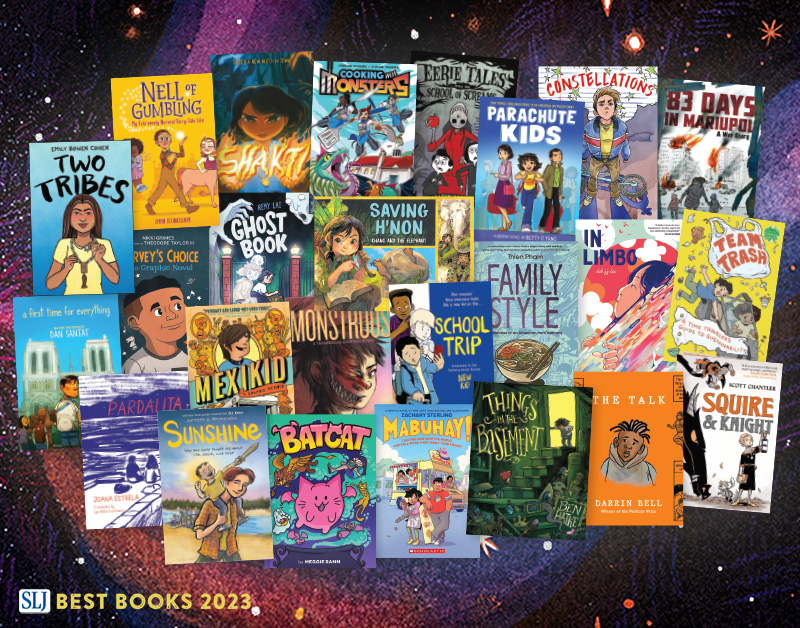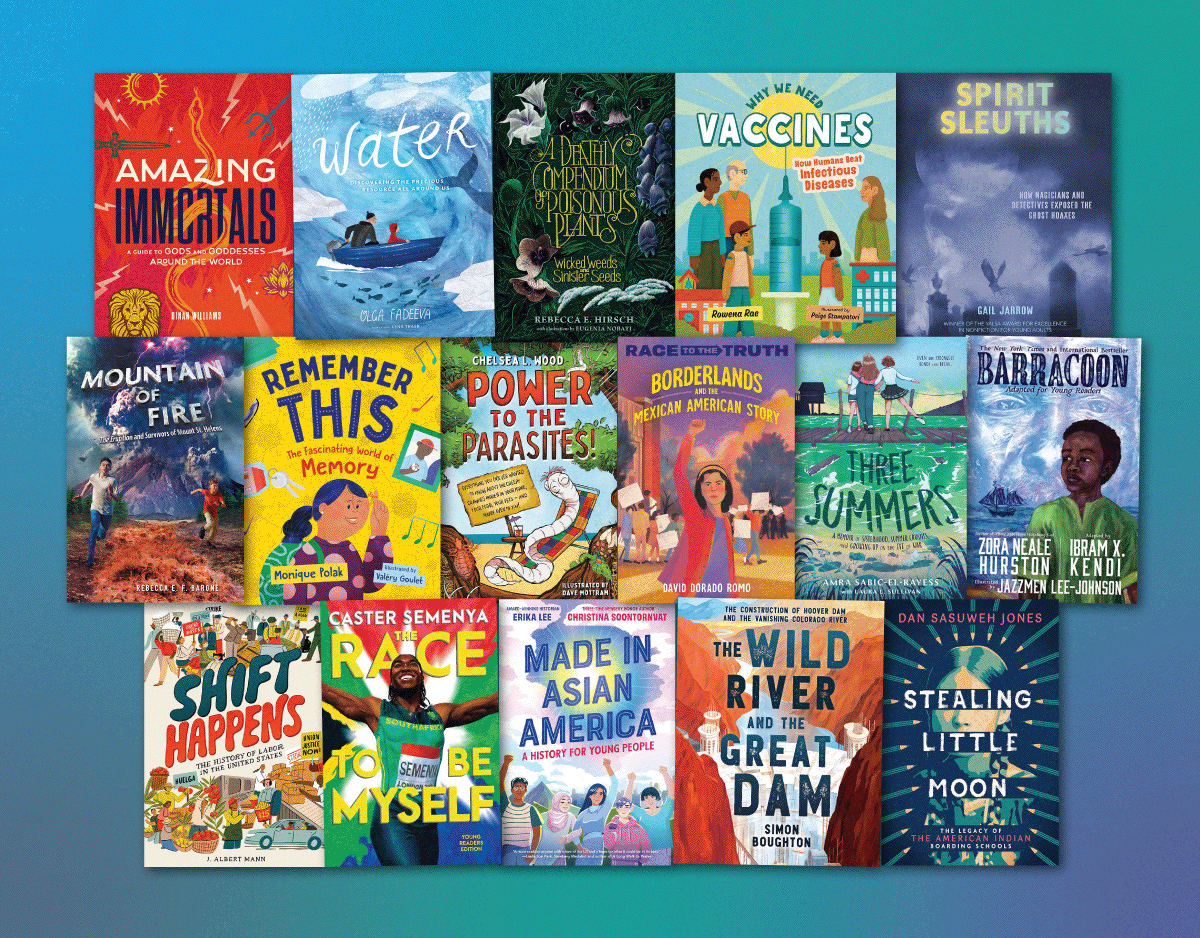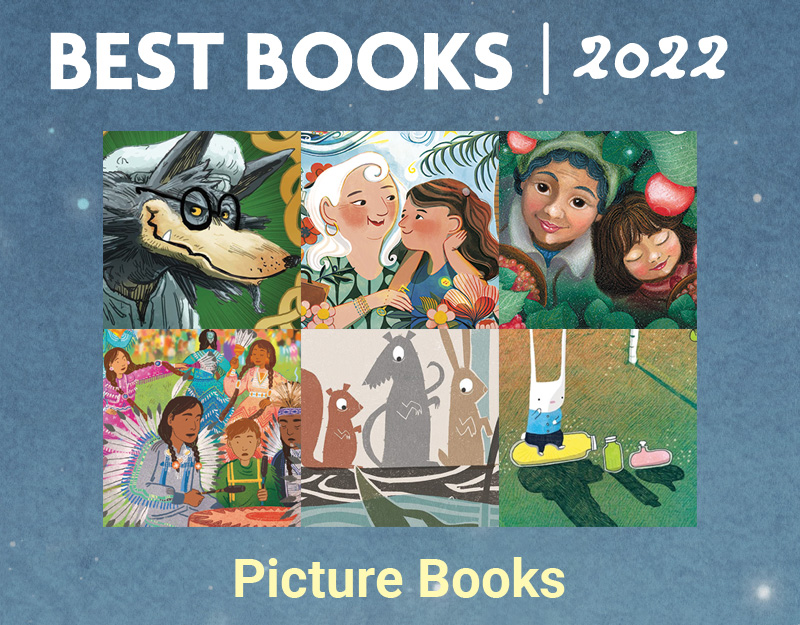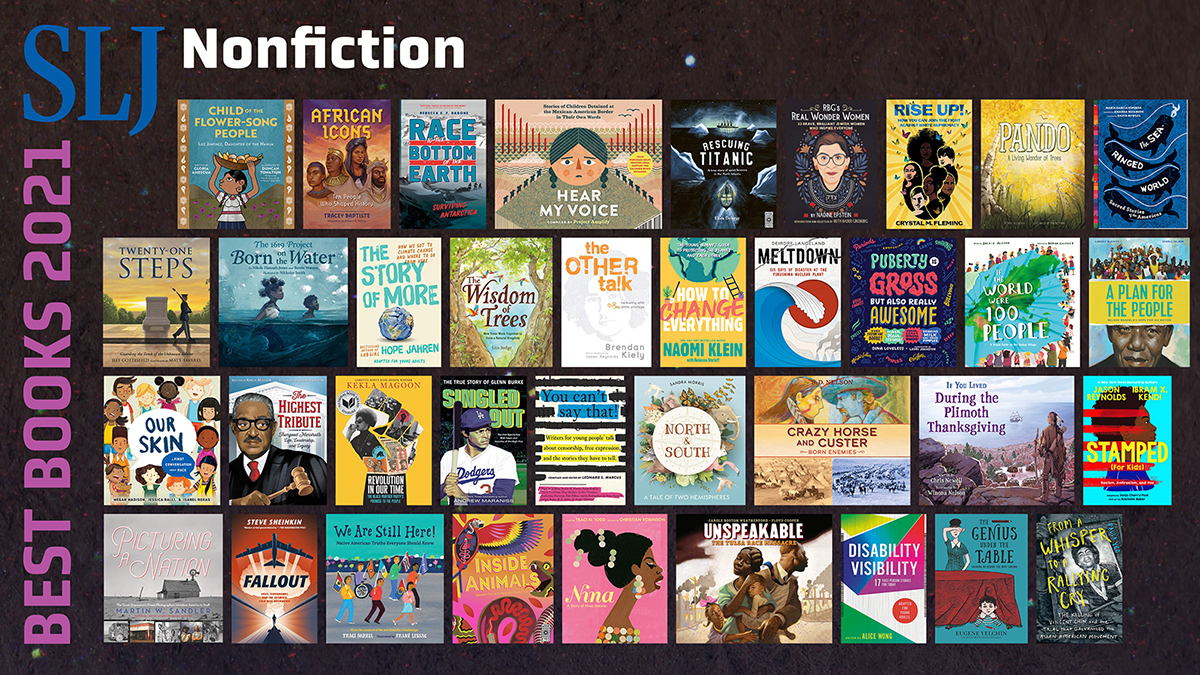Review of the Day: The Fox and the Crow by Manasi Subramaniam
 The Fox and the Crow
The Fox and the Crow
By Manasi Subramaniam
Illustrated by Culpeo S. Fox
Karadi Tales
$17.95
ISBN: 978-81-8190-303-7
Ages 4 and up
On shelves now
In the classic Aesop fable of The Fox and the Crow where do your loyalties lie? You remember the tale, don’t you? Long story short (or, rather, short story shorter) a prideful crow is tricked into dropping its bread into the hungry mouth of a fox when it is flattered into singing. Naturally your sympathies fall with the fox to a certain extent. Pride goeth before the bread’s fall and all that jazz. Now there are about a thousand different things that are interesting about The Fox and the Crow, a collaboration between Manasi Subramaniam and Culpeo S. Fox. Yet the thing that I took away from it was how my sympathies fell, in the end, to the prideful crow victim. His is a miserable existence, owed in part due to his own self-regard and also to not seizing the moment when it presents itself. Delayed gratification sometimes just turns into no gratification. Lofty thoughts for a book intended for four-year-olds, eh? But that’s what you get when something as lovely, dark, and strange as this particular The Fox and the Crow hits the market. Gorgeous to eye and ear alike, the story’s possibilities are mined beautifully and the reader is left reeling in the wake. If you’d like a folktale that’s bound to wake you up, this beauty has your number.
A murder of crows gathers on the telephone wires. Says the text “When dusk falls, they arrive, raucous, clamping their feet on the wires in a many-pronged attack.” One amongst them, however, cannot help but notice a fresh loaf of new bread at the local bakery. Without another thought it dives, steals the bread, and leaves the baker angrily yelling in its wake. Delighted with its prize the crow takes to a tree branch to wait. “Bread is best eaten by twilight.” Below, a hungry fox observes the haughty crow and desires the tasty morsel. She sings up to the crow. “A song is an invitation. Crow must sing back.” He does and, in doing so, loses his prize to the vixen’s maw. The last line? “A new day breaks. An old hunger aches.”
ADVERTISEMENT
ADVERTISEMENT
Turning Aesop fables into full picture books is a bit of an art. If you read one you’ll find that it’s remarkably short on the page. It requires a bit of padding on the author’s part. Either that or some true creativity. Look, for example, at some of the best Aesop adaptations out there. Some artists choose to go wordless (The Lion and the Mouse by Jerry Pinkney). Others get remarkably loquacious (Lousy Rotten Stinkin’ Grapes by Margie Palatini). In the case of Subramaniam, she makes the interesting choice of simplifying the text with long, luscious words while expanding the story. The result is lines like “Crow’s stomach burns with swallowed song” or “Oh, she’s a temptress, that one.” No dialogue is necessary in this book. Subramaniam shoulders all the work and though she doesn’t spell out what’s happening as simply as some might prefer (you have to know what is meant by “Crow’s pride sets his hunger ablaze” to get to the classic Aesopian moral of the tale) it’s nice to see a new take on a story that’s been done to death in a variety of different spheres.
Artist Culpeo S. Fox is new to me. From Germany (for some reason everything made a lot more sense when I learned that fact) the man sort of specializes in foxes. For this book the art takes on a brown and speckled hue. Early scenes look as though the very dirt of the ground was whipped into the air alongside the crows’ wings. Yet in the midst of all this darkness (both from the story and from the art) there’s something incredibly relatable and kid-friendly in these creatures’ eyes. The crow in particular is rendered an infinitely relatable fellow. From his first over-the-shoulder glance at the bread cooling on the windowsill to the look of pure eagerness when he alights on a private branch. It’s telling that the one moment the eye is made most unrelatable (pure white) is when he’s overcome with fury at having basically handed his loaf to the fox’s maw. Fury can be frightening.
 It’s also Fox’s inclination to change from a horizontal to a vertical format over and over again that makes the book unique in some way. It’s probably the element that will turn the most people off, but it’s never done without reason. To my mind, if a book is going to go vertical, it needs to have a reason. Caldecott Honor book Tops and Bottoms by Janet Stevens, for example, knew exactly how to make use of the form. Parrots Over Puerto Rico in contrast seemed to do it on a lark rather than for any particular reason. In The Fox and the Crow each vertical shift is calculated. The very first encounter between the fox and the crow is a vertical shot. Most interesting is the next two-page spread. You find yourself not entirely certain what the best way to hold book might be. Horizontal? Vertical? Upside down? Only after a couple readings did I realize that the curve of the crow’s inquiry-laden neck echoes the fox’s very same neck curve (albeit with 75% more guile).
It’s also Fox’s inclination to change from a horizontal to a vertical format over and over again that makes the book unique in some way. It’s probably the element that will turn the most people off, but it’s never done without reason. To my mind, if a book is going to go vertical, it needs to have a reason. Caldecott Honor book Tops and Bottoms by Janet Stevens, for example, knew exactly how to make use of the form. Parrots Over Puerto Rico in contrast seemed to do it on a lark rather than for any particular reason. In The Fox and the Crow each vertical shift is calculated. The very first encounter between the fox and the crow is a vertical shot. Most interesting is the next two-page spread. You find yourself not entirely certain what the best way to hold book might be. Horizontal? Vertical? Upside down? Only after a couple readings did I realize that the curve of the crow’s inquiry-laden neck echoes the fox’s very same neck curve (albeit with 75% more guile).
It’s not just the art and the story. The very size of the book itself is unique. It’s roughly 11 X 12 inches, essentially a rather large square. Work with enough picture books and you get a feel for the normal dimensions. But normal dimensions, you sense, wouldn’t quite encompass was Fox is trying to accomplish here. You need size to adequately tell this story. The darkness and beauty of it all demand it.
I am consumed with professional jealousy after reading the Kirkus review of this book. Their takeaway line? “Aesop noir”. It’s rather perfect, particularly when you consider that one reading of this book would fall under that classic noir storyline of a seedy soul done in by the wiles of a woman. Or vixen, rather. I don’t know that any younger kids would necessarily take to heart the moral message of the original story, but slightly older readers will jive to what Subramaniam is getting at. We need folktales in our collections that shake things up a bit. That aren’t afraid to get original with the source material. That aren’t afraid to get, quite frankly, beautiful on us. The pairing of Subramaniam and Fox is inspired and the book a lush treat. An Aesop necessity. Aesop done right.
On shelves now.
Source: Final copy sent from publisher for review.
Like This? Then Try:
- Baby Crow by John A. Rowe
- Fables by Aesop, illustrated by Jean-Francois Martin
- Trickster: Native American Tales, a Graphic Collection, edited by Matt Dembicki
Professional Reviews:
- A star from Publishers Weekly
- Kirkus
Filed under: Best Books, Best Books of 2014, Reviews, Reviews 2014
About Betsy Bird
Betsy Bird is currently the Collection Development Manager of the Evanston Public Library system and a former Materials Specialist for New York Public Library. She has served on Newbery, written for Horn Book, and has done other lovely little things that she'd love to tell you about but that she's sure you'd find more interesting to hear of in person. Her opinions are her own and do not reflect those of EPL, SLJ, or any of the other acronyms you might be able to name. Follow her on Twitter: @fuseeight.
ADVERTISEMENT
ADVERTISEMENT
SLJ Blog Network
One Star Review, Guess Who? (#211)
Kevin McCloskey on ‘Lefty’ | Review and Drawn Response
Notable NON-Newbery Winners: Waiting for Gold?
The Seven Bills That Will Safeguard the Future of School Librarianship
Take Five: Newbery Picks, Part Two
Gayle Forman Visits The Yarn!
ADVERTISEMENT








Whoa. Love the quotes. I will seek this out (and not just because I’m partial to foxes). Thanks.